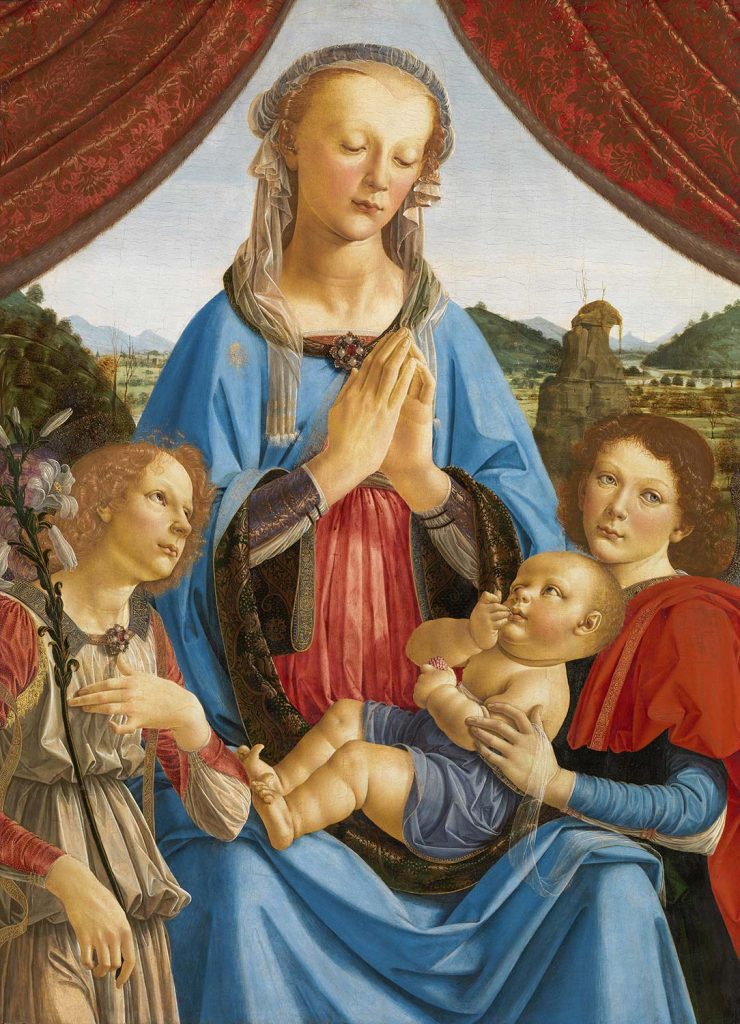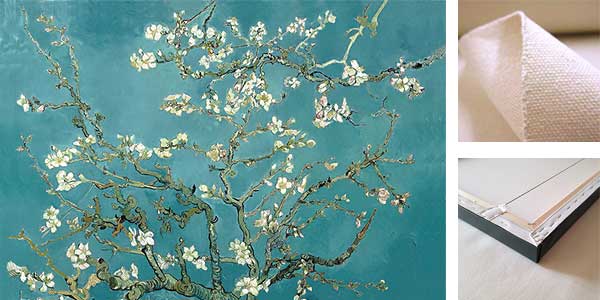
The Virgin and Child with Two Angels by Andrea del Verrocchio, assisted by Lorenzo di Credi was created in 1476 – 1478. The painting is in National Gallery London. The size of the work is 96,5 x 70,5 cm and is made of egg tempera on wood.
About the Work
Paintings of the Virgin Mary and Christ Child were not only found in churches in Renaissance Italy but also in people’s homes, where they were the focus of private prayer. This painting is slightly larger than most made for domestic use and – unusually – the figures are lit from the right. It may have been made for a specific location where the natural light also entered the room from the right – possibly a private chapel within the owner’s house, a luxury reserved for only the wealthiest citizens. It makes sense that such a patron would order a work from Verrocchio; his workshop was the most prestigious in Florence and there he trained several notable painters including Leonardo da Vinci and Botticelli.
Verrocchio’s training and brief career as a goldsmith are evident in the elaborate brooches of pearls and rubies worn by the Virgin and the angel on the left, and the silk fabrics woven with gold thread. The leaves and stem of the lily are gilded, transforming it too into a luxury object. Technical examination has shown that Verrocchio used three techniques to render different effects with gold. The gold thread used in the lining of the Virgin’s robe and her lilac sleeves is created entirely with yellow paint, but the star at her shoulder and the fringe on the left angel’s sleeve are gold leaf applied over a sticky base called mordant.
This real gold is the brightest and most tactile. ‘Mosaic gold’, a type of tin which shines less brightly than real gold, has been used in the borders of the robes and the ribbon that flutters over the shoulders of the left angel; it gives a more subtle gilded effect that does not distract us from the overall design. Read more in National Gallery London
About the Artist
Andrea del Verrocchio (c. 1435 – 1488) was an Italian sculptor, painter and goldsmith who was a master of an important workshop in Florence. He apparently became known as Verrocchio after the surname of his master, a goldsmith. Few paintings are attributed to him with certainty, but important painters were trained at his workshop. His pupils included Leonardo da Vinci, Pietro Perugino and Lorenzo di Credi. His greatest importance was as a sculptor and his last work, the Equestrian statue of Bartolomeo Colleoni in Venice, is generally accepted as his masterpiece.
Verrocchio was born in Florence in around 1435. His father, Michele di Francesco Cioni, initially worked as a tile and brick maker, then later as a tax collector. Verrocchio never married, and had to provide financial support for some members of his family. He was at first apprenticed to a goldsmith. It has been suggested that he was later apprenticed to Donatello, but there is no evidence of this and John Pope-Hennessy considered that it is contradicted by the style of his early works. It has been suggested that he was trained as a painter under Fra Filippo Lippi. Read more in Wikipedia
Order a reproduction of this work (printed on canvas)
